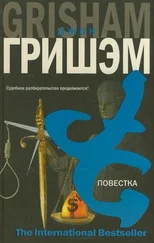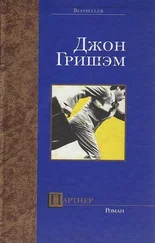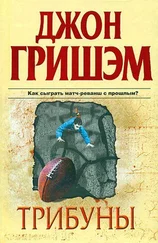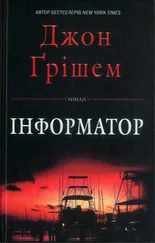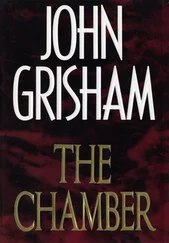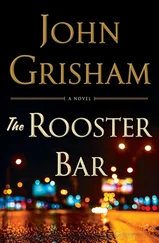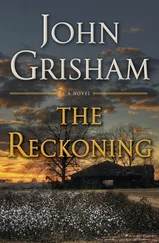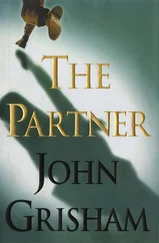She had never believed that Bannick wanted to get caught. He had status, prestige, popularity, money, education — far more going for him than the average serial killer, if there was such a thing. But he loved the gamesmanship. He was a sociopath who killed for revenge, but he thrived on the planning and execution, and the perfection of his crimes.
Eight murders, at least in her book, in seven states, over twenty-two years. He was only forty-nine years old and probably in his prime as a killer. Each murder gave him even more confidence, more thrills. A veteran now, he probably believed that he could never be caught. Who else was on his list?
The paper was standard copy, plain white, 8.5×11, purchased a year earlier at a Staples in Dallas. The envelope was just as plain and untraceable. The word processor was an ancient Olivetti, one of the first generation with a small screen and little memory, circa 1985. She had bought it second- or third-hand in an antiques warehouse in Montgomery.
Wearing disposable plastic gloves, she carefully placed several sheets of copy paper in the tray and opened the screen and stared at it for a long time. The knot twisted in her stomach and she couldn’t keep going. Finally, she managed to type slowly, awkwardly, one key at a time:
Judge Bannick: The Florida Board on Judicial Conduct is investigating your recent activities, re Verno, Dunwoody, Kronke. Could there be others? I think so.
Typically she ate little, and was surprised when her stomach flipped, and she raced to the bathroom where she vomited and retched until her chest and back ached. Moving around gingerly, she drank some water and eventually made it back to her desk. She stared at what she had written, a note she had composed a thousand times in her mind, words she had uttered and practiced again and again.
How would he react? Receiving the anonymous letter would be catastrophic, devastating, life-altering, terrifying. Or at least she hoped so. He was too cool and cold-blooded to panic, but his world would never be the same. His world would be rocked, and he and his demons would drive themselves even crazier now that someone was on his trail. There was no one he could tell, no one to confide in, no one to run to.
She wanted to rock his world. She wanted Bannick to watch every step, look over his shoulder, jump at every noise, study every stranger. She wanted him to stay awake at night, listening to every sound and trembling in fear, the way she had lived for so long.
She thought of Lacy and again debated the strategy of exposing her. Jeri had convinced herself that Bannick was too smart to do anything stupid. Plus, Lacy was a tough girl who could take care of herself. At some point soon Jeri would warn her.
She printed the note on a sheet of the copy paper and put it in the envelope. Typing his name gave her another chill. R. Bannick, 825 Eastman Lane, Cullman, Florida, 32533.
The stamp was generic and applied without saliva. She was sweating and lay down on the sofa for a long time.
The next note was also on white copy paper, but from a different manufacturer. She typed:
Now that I know who you are
I send greetings from my grave
So long ago and so far
From that night with you and Dave
You stalked and waited all those years
To find me in a place unseen
And act out all your anger and fears
On a girl you knew as Eileen
Unsteady as she was, she managed to laugh out loud at the image of Bannick reading her poem. She laughed at his horror, his disbelief, and his rage that a victim had caught up with him.
On Saturday, Jeri left Mobile and drove an hour to Pensacola. In a suburban shopping center, she found a blue postal box sitting between a drop-off for FedEx and one for UPS. The nearest security camera was far away, over the door of a coffee shop. Wearing gloves and staying in her car, she placed the first letter into the slot. It would be postmarked Monday at the Pensacola distribution center and delivered to the box beside the front door of Bannick’s home no later than the following Tuesday.
Two hours later she pulled off the expressway at Greenville, Alabama, and dropped off her poem at the city post office. It would be collected Monday and trucked to Montgomery where it would be postmarked and sent back south to Pensacola. Bannick should have it by the following Wednesday, Thursday at the latest.
She took the backroads home to Mobile and enjoyed the drive. She listened to jazz on Sirius and kept checking her smile in the mirror. The first two of her letters had been mailed. She had found the courage to confront the killer, or at least set in motion his endgame. The hunting phase was over, and for that she was elated. Now she moved into the next phase, still unnamed. Her work was not over, by any means, but the heavy lifting had been done, all twenty-two years of it.
Now Lacy had the case, and she would eventually bring in the state police, maybe the FBI. And Bannick would never know who stalked him.
Late that night she was reading a novel, sipping her second glass of wine, and fighting the temptation to go online and dig more. Her phone pinged with an email arriving on one of her secure accounts. It was KL, or Kenny Lee, and he asked if she was awake. She was suddenly weary of sleuthing and just wanted to be left alone, but he was an old friend, one she would never meet.
She wrote back: Hey there. How’s life?
Living the dream. Got a new death-by-rope out of Missouri, case is four months old, looks similar.
As always, Jeri grimaced at the news of another murder, and, as always, she jumped to the conclusion that it was Bannick. But she’d had enough and didn’t want to spend more money and waste more energy. How similar?
No photos yet, no description of the rope. But no suspects and nothing from the scene.
She reminded herself that three hundred people a year were murdered by strangulation and about 60 percent of those cases were eventually solved. That left 120 cold cases, far too many to blame on one man.
Let me sleep on it. In other words, don’t start your clock at $200 an hour. Kenny Lee had led her to four of Bannick’s victims and she had paid him enough.
Sweet dreams.
Still snowing up there? She mailed him cash payments to a post office box in Camden, Maine. She assumed he lived somewhere around there.
As we speak. What’s your body count now?
Eight. Seven by the rope and Dunwoody.
It’s time for help. Gotta stop this guy. I have contacts.
So do I. Things are moving.
Okay.
The task force gathered in its workroom late Monday morning and compared notes. Twenty days into the assessment period and they had little to show for their efforts. Lacy recounted for Sadelle’s benefit their trip to Marathon, but the poor lady was either half asleep or stoned from her pain meds.
Darren, though, had some interesting news. Sipping his high-end coffee, he said, “So I had a chat with a Mr. Larry Toscano, partner in the Miami firm of Paine & Steinholtz, which has descended all these many years from Paine & Grubber, the old firm where Bannick spent the summer of 1989 as an intern. Toscano at first was reluctant to get involved, but when I explained that the BJC does possess subpoena powers in certain cases and that, if necessary, we would raid their offices and start snatching files, which of course is a joke with our limited staff, but anyway the bluff worked and Toscano fell in line. He found the records in short order and confirmed that Bannick did indeed work there the summer before his last year of law school. He said the kid’s file was clean and he did good work, got high marks from his supervisor and such, but was not offered an associate’s position. I pressed Toscano for more details and he had to go back to the file. Seems as if there were twenty-seven interns that summer, from a variety of law schools, and that everyone but Bannick received an offer of employment. Twenty-one accepted. I asked why Bannick got stiffed if his file was clean and, of course, Toscano had no clue. At the time, Perry Kronke was one of two managing partners and was in charge of their summer intern program. Toscano said there is a copy of a letter in the file from Kronke to Bannick in which no job was offered. He sent me a copy of the entire file, again after I mentioned a subpoena. There’s not much to it, but it does prove what we already knew — that their paths crossed in 1989.”
Читать дальше


